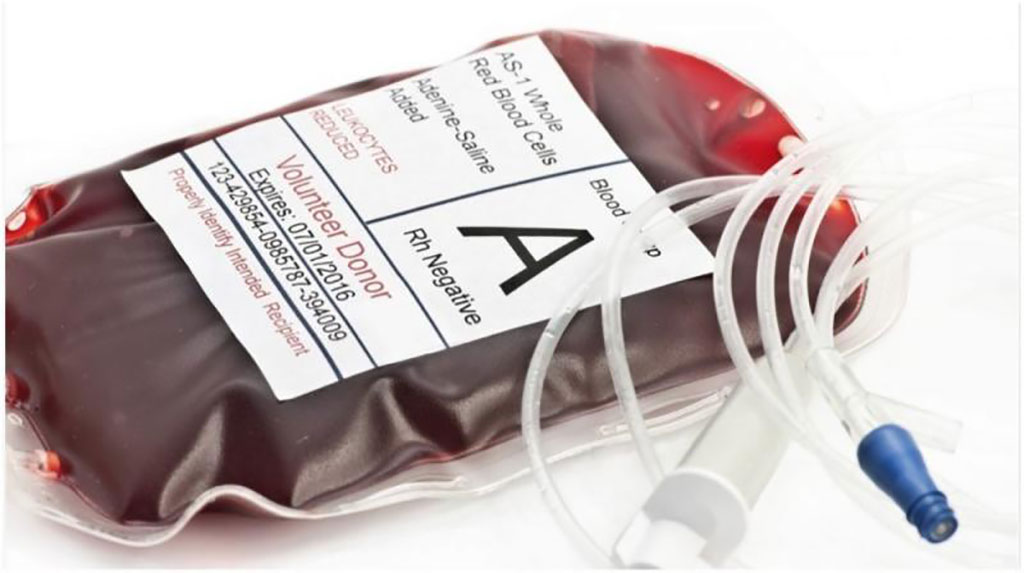Transfused RBCs Rapidly Recover From Metabolic Storage Lesions
Posted on 20 Jul 2022
Directly after red blood cell (RBC) transfusion, a significant number of RBCs are cleared from the circulation; in some patients, up to 38% of the transfused RBCs are cleared in the first 24 hours.
During storage, RBCs undergo several metabolic and morphological changes, known as the “storage lesion.” The metabolic changes include decreased cellular levels of 2,3-diphosphoglycerate (2,3-DPG), adenosine triphosphate (ATP), and impaired redox metabolism. Decrease in the intracellular pH contributes significantly to the storage lesion.

Hematologists at the University of Amsterdam (Amsterdam, The Netherlands) conducted an open-label randomized controlled trial to study the effect of storage time and additive solution on the post-transfusion recovery (PTR) of RBCs. Twenty healthy male subjects were recruited who donated 500 mL and 200 mL of whole blood in citrate-phosphate-dextrose (CPD) at the national blood bank 35 and two days before the transfusion, respectively.
In this trial the effect of storage, phosphate-adenine-glucose-guanosine-gluconate-mannitol (PAGGGM) versus saline-adenine-glucose-mannitol (SAGM), on post-transfusion recovery (PTR) and metabolic restoration after transfusion was assessed. Subjects received an autologous biotinylated RBC concentrate stored for 35 days in SAGM or PAGGGM. As a reference for the PTR, a 2-day stored autologous biotinylated RBC concentrate stored in SAGM was simultaneously transfused. RBC phenotype and PTR were assessed after transfusion.
EDTA anti-coagulated blood samples were analyzed one day after sampling. The amount of bioRBCs was quantified by flow cytometry after staining with Streptavidin Alexa Fluor 647 conjugate. All flow cytometry experiments were performed with a flow cytometer: BD FACS, BD Fortessa + High Throughput Sampler (HTS), (BD Biosciences, San Jose, CA, USA). BioRBCs were isolated in two separate steps from the EDTA whole blood samples. This procedure was based on the differences in biotin density. In the first step, bioRBCs were isolated using magnetic beads, followed by the second step using flow cytometric cell sorting. Ultra-high pressure liquid chromatography–mass spectrometry analyses were performed using a Vanquish UHPLC coupled online to a Q Exactive mass spectrometer (Thermo Fisher, Bremen, Germany).
The investigators reported that the PTR was significantly higher in the 2-day stored RBCs than in 35-day stored RBCs two and seven days after transfusion: 96% (range 90% to 99%) versus 72% (66% to 89%) and 96% (90% to 99%) versus 72% (66% to 89%), respectively. PTR of SAGM- and PAGGGM-stored RBCs did not differ significantly. Glucose and redox metabolism were better preserved in PAGGGM-stored RBCs. The differences measured in the blood bag remained present only until one day after transfusion. No differences in RBC phenotype were found besides an increased complement C3 deposition on 35-day RBCs stored in PAGGGM.
The authors concluded that despite a better metabolic profile of PAGGGM RBCs, PAGGGM storage did not lead to a higher PTR. Therefore, storage PAGGGM is not a superior alternative for storage in SAGM. Furthermore, the metabolic storage lesion was corrected within a day after transfusion. Finally, 35 days of storage resulted in a lower PTR compared with two days of storage. The study was published on July 6, 2022 in the journal Blood Advances.
Related Links:
University of Amsterdam
BD Biosciences
Thermo Fisher







 assay.jpg)





